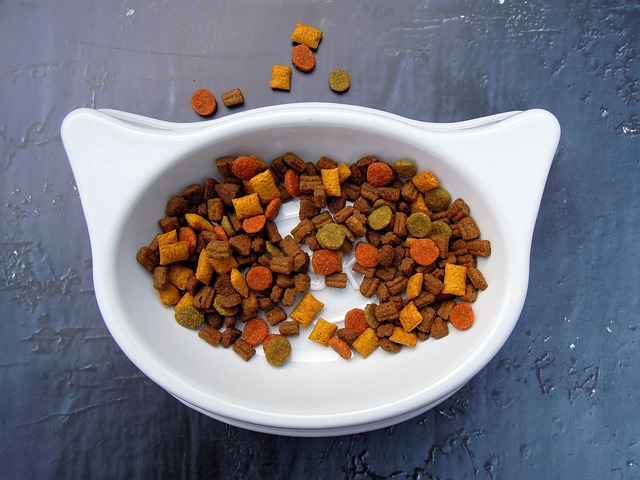
As a small dog parent, you want nothing but the best for your furry friend. And when it comes to their food, it’s no different. You want to give them something that not only nourishes them but also tantalizes their taste buds.
That’s where homemade food for small dogs comes in – it’s like a chef’s kiss on your pup’s palette! By cooking for your little one, you can guarantee a wholesome meal that’s free of additives and fillers. Plus, it’s easier on the pocket, too!
Here, we’ll guide you through the recipe for creating a drool-worthy meal that your little munchkin will love, complete with all the necessary nutrients to keep them healthy and happy. So, let’s get started on cooking up a storm!
Why Homemade Food for Small Dogs Is A Good Choice
Are you tired of sifting through the endless options of commercial dog food, only to find that none of them seem quite right for your furry friend? It’s time to take matters into your own hands and try making homemade small dog food.
Making homemade dog food takes some effort, but the peace of mind and health benefits it provides make it a no-brainer for any small dog owner who truly cares about their furry companion’s well-being.
So why homemade food for small dogs is a good cjoice? Check out these five benefits of making homemade food for your furry friend:
- More Control: You have complete control over the how much homemade dog food to feed, ingredients, ensuring that you’re providing your pup all the nutrients they need without any harmful additives. Moreover, you can adjust the recipe to cater to any allergies or dietary restrictions.
- Cost-Effective Solution: By making your own dog food, you can save money in the long run by purchasing ingredients in bulk and creating a larger batch that can last for several meals.
- Tailored Food: Customize your pet’s meals to their preferences and taste buds. Want to add some extra flavor? Go ahead! Your furry friend will thank you for it.
- Safe & Healthy: Homemade food can be fresher than commercial food, reducing the risk of spoilage or contamination. Your pet deserves only the freshest ingredients, and you can provide just that by making their food yourself.
- Build Strong Connection: Making your pet’s food from scratch can strengthen your bond and create an unbreakable connection with your furry friend. After all, sharing meals is a way to show love and affection, and your pet will certainly appreciate it.
With these perks in mind, let’s roll up our sleeves and get cooking! In the next section, we’ll provide a step-by-step guide to crafting a delectable and nutritious meal for your small dog.
Ingredients for Homemade Dog Food
Before you start making homemade food for your small dog, it is important to know what ingredients to use. Here are some of the key ingredients that you will need:
- Protein: Small dogs need a high-quality source of protein to maintain muscle mass and support growth. Good sources of protein include chicken, turkey, beef, and fish.
- Vegetables: An important source of fiber, vitamins, and minerals. Good vegetable for homemade vegetarian dog food options include carrots, green beans, peas, and sweet potatoes.
- Carbohydrates: Provides energy for your dog. Good sources of carbohydrates include brown rice, quinoa, and oats.
- Fats: A vital source of energy and help your dog absorb essential vitamins. Good sources of fat include fish oil and coconut oil.
- Calcium: Important for bone health. Good sources of calcium include eggshells and calcium supplements.
Recipes for Homemade Dog Food
Here are two recipes for homemade dog food that your small dog will love. You need to check from your veterinarian if you need homemade food for nursing dog or homemade food for pregnant dog:
Recipe 1: Chicken and Rice
Ingredients:
- 1 pound boneless chicken breast
- 1 cup brown rice
- 1 cup chopped carrots
- 1 cup chopped green beans
- 1 tablespoon fish oil
Instructions:
- Cook the chicken in a pan until it is fully cooked.
- Cook the brown rice according to the instructions on the package.
- Steam the carrots and green beans until they are soft.
- Mix the cooked chicken, rice, carrots, and green beans in a large bowl.
- Add fish oil to the bowl and mix thoroughly.
- Let the dog food cool before serving.
Recipe 2: Beef and Sweet Potato
Ingredients:
- 1 pound ground beef
- 1 cup cooked sweet potato
- 1 cup cooked quinoa
- 1 cup chopped peas
- 1 tablespoon coconut oil
Instructions:
- Cook the ground beef in a pan until it is fully cooked.
- Cook the sweet potato and quinoa according to the instructions on the package.
- Steam the peas until they are soft.
- Mix the cooked ground beef, sweet potato, quinoa, and peas in a large bowl.
- Add coconut oil to the bowl and mix thoroughly.
- Let the dog food cool before serving.
Tips for Making Homemade Dog Food
Here are some additional tips to keep in mind when making homemade dog food:
- Consult with your veterinarian: Before making any significant changes to your dog’s diet, it’s important to consult with your veterinarian. They can advise you on the specific nutritional needs of your dog and any dietary restrictions that may apply.
- Keep the recipe balanced: When making homemade dog food, it’s important to ensure that the recipe is balanced and provides all the necessary nutrients for your dog. Be sure to include a high-quality source of protein, carbohydrates, healthy fats, and vegetables.
- Don’t overfeed: Small dogs have smaller stomachs, so it’s important not to overfeed them. Follow the feeding guidelines provided by your veterinarian and adjust the portion size based on your dog’s age, weight, and activity level.
- Use high-quality ingredients: When making homemade dog food, it’s important to use high-quality ingredients. Choose fresh, organic, and locally sourced ingredients whenever possible. Avoid using ingredients that are high in salt, sugar, or artificial additives.
- Store the food properly: Homemade dog food can spoil quickly, so it’s important to store it properly. Divide the food into small portions and store them in airtight containers in the fridge or freezer. Thaw frozen portions before serving.
- Introduce new foods gradually: If you’re introducing new ingredients into your dog’s diet, do so gradually. Introduce one new ingredient at a time and monitor your dog for any adverse reactions.
- Monitor your dog’s health: Keep an eye on your dog’s overall health and wellbeing when feeding them homemade food. If you notice any changes in their appetite, energy level, or digestion, consult with your veterinarian.
Conclusion
In conclusion, making homemade food for small dog is a fantastic choice that can help ensure their health and well-being. With our comprehensive guide, you’ll have all the information you need to prepare healthy and delicious meals for your furry friend.
By avoiding harmful additives and controlling the quality of ingredients, you can give your furry friend the nutrition they deserve. So why not take the plunge and give it a try?
We’d love to hear your thoughts on this topic, so feel free to leave a comment below with your experiences or any tips you have for making homemade dog food. Let’s start a conversation and share our knowledge to help our furry friends live their best lives!

Pingback: Discover the 7 Best Bully Sticks for Small Dogs - Top Picks and Reviews - cutesmalldog.com
Pingback: What Fruit Can Dogs Have - Everything About Fruits Intake for Small Dogs (2023) - cutesmalldog.com